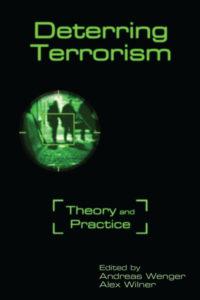British emergency services stage their reactions to a mock, large-scale terrorist attack using chemical, biological or nuclear weapons (PA Images).
The term ‘nuclear terrorism’ combines Cold War fear of total nuclear annihilation with the threat from non-state groups seeking the most spectacular forms of terror. UnHerd’s columnist on global strategy, Michael Burleigh, asked a leading Israeli intelligence figure, with practical experience in counterterrorism and illegal nuclear proliferation, about this issue for our under-reported series. This is a verbatim account of what he was told.
There are three types of threat involving ‘nuclear terrorism’.
(1) The least likely but most devastating
The most unlikely is that a terrorist group would design and manufacture a nuclear device, which they could detonate in a major city, since no terror group is realistically capable of miniaturising (or ‘weaponising’) the warhead of a ballistic missile. For sure the technology is easy to glean from the internet, but the realities of building ‘a Bomb’ are costly and complex.
Although Al Qaeda has sought to get its hands on both the expertise and the materials, only states with a large industrial and scientific base have, in practice, the engineering skills to build an implosion device (which involves precision triggers simultaneously causing atomic fission or fusion) and it requires sophisticated processes and thousands of centrifuges to manufacture even small quantities of highly enriched uranium (HEU) or plutonium. No terrorist group has been able to acquire or manufacture such materials, though not for want of trying, from the 25 countries which possess them. In every case they were the victims of sting operations by intelligence services, to the point that a joke went that whenever such materials were being hawked around, the seller was the CIA and the buyer Mossad.
At present there are approximately 16,000 nuclear warheads, of which over 90% are under US or Russian control. All nine existing nuclear armed states heavily guard their arsenals, which do not involve bombs or missiles simply lying around ready to use: they are in various states of disassembly, except for those actively deployed on bomber bases, in silos, submarines and so on. These have complex codes for arming and activation. Civil nuclear plants also have their own security forces and multiple systems to prevent Chernobyl-style nuclear accidents being deliberately brought about by intruders or insiders, though the risk of external cyber interference has increased in recent years as one can indirectly glean from US and Israeli use of the ‘Olympic Games’ virus to destroy Iranian centrifuges (and the retaliatory remote attack on Saudi Aramco’s operating computers) shows. Simply crashing an airliner into a nuclear plant is otiose too, since the critical areas are encased in thick concrete, and there are systems to shut down the reactor in the event of earthquakes which such an attack would resemble.
The prospect of an existing nuclear armed state supplying a terrorist surrogate or proxy with a functioning nuclear device is routinely said to be greatly diminished by nuclear ‘forensics’. Effectively, if a nuclear bomb were to be detonated, scientists could establish the fingerprints of the constituent materials, as one can do with, for example, a cargo of crude oil, which would result in instant nuclear devastation being visited on, say, a guilty North Korea or Pakistan by the victim of such an attack.
In reality, though many nuclear warheads were destroyed by the newly independent post-Soviet successor states, many databases on the whereabouts of such materials are incomplete, as is nuclear mapping. As for an existing nuclear state being taken over by an extremist movement (and only Pakistan fits this picture), both the US and China have plans to seize its nuclear arsenals before a device found its way to a terror group.
(2) A ‘dirty’, radioactive bomb
This brings us to the most likely form of nuclear terrorism: a ‘dirty bomb’ or radiological dispersion device, in which radioactive materials are spread by a conventional explosion. Such materials are present in everyday carbon monoxide detectors or emergency exit signs, but in practice the main concern is with isotopes used in hospitals to treat cancers or within complex machinery. Such materials would have to be acquired, moved and stored in some quantities – though the core of the ‘Little Boy’ bomb used on Hiroshima was the size of a football weighing 180lbs – which would not be without major risks for the perpetrators. Though the physical aftermath of such an attack would resemble most conventional terrorist bombings, fear that a wider area had been contaminated by materials which are toxic and long-lasting would result in mass panic, regardless of how easily the authorities carried out an extremely expensive clean-up.
(3) A non-nuclear but high-devastation alternative terror attack
The final point our interlocutor made was effectively ‘why bother’? He explained that Osama bin Laden was “a one-off megalomaniac” – with a background in civil engineering – who successfully combined a long-established terrorist strategy of high-jacking passenger aircraft with his obsession with bringing down tall buildings by using planes as guided missiles. The desire to achieve maximum terror by blowing up aircraft has not gone away in the interim, but the means are pretty simple once you are on the plane.







Join the discussion
Join like minded readers that support our journalism by becoming a paid subscriber
To join the discussion in the comments, become a paid subscriber.
Join like minded readers that support our journalism, read unlimited articles and enjoy other subscriber-only benefits.
Subscribe